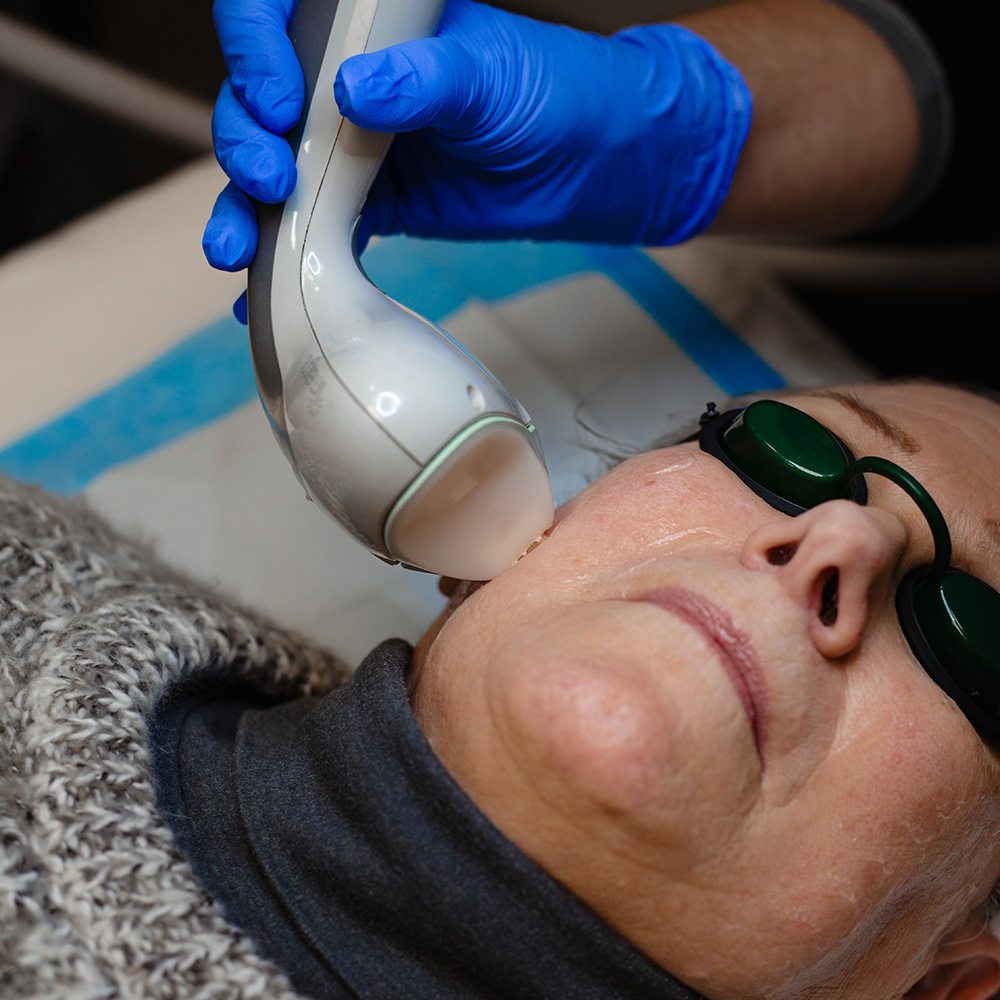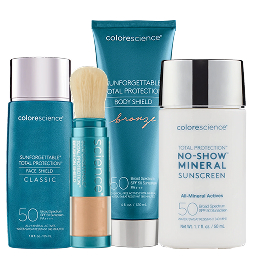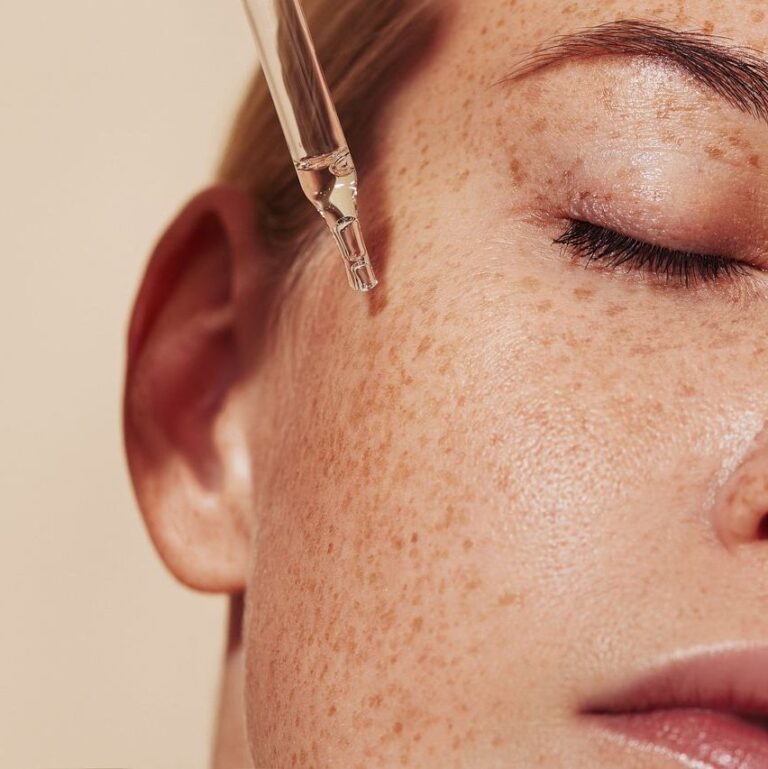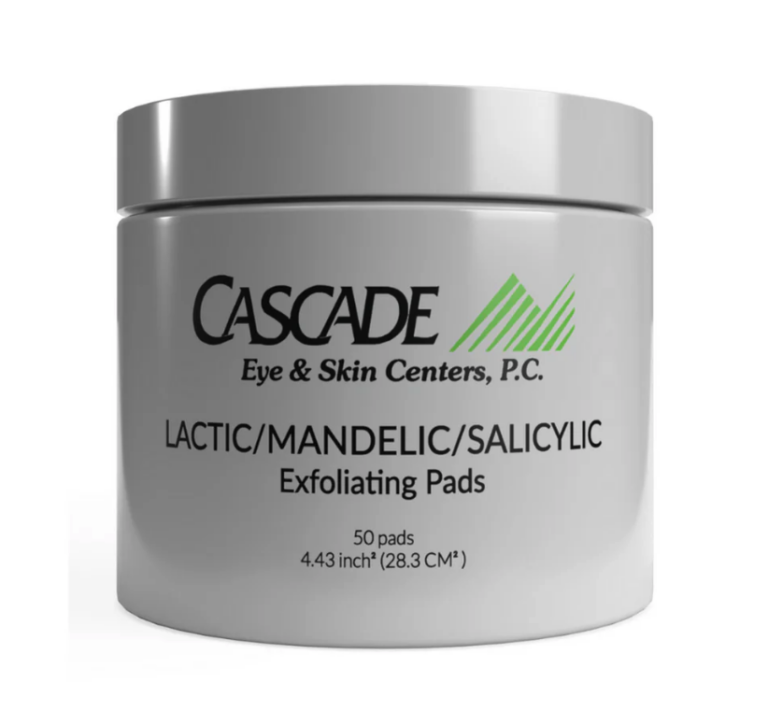How to Get Rid of Melasma: Treatments, Skincare, and Prevention
Melasma is a common skin condition that causes dark patches, typically on the face. While it isn’t harmful, it can be frustrating to manage — especially since it often returns without proper treatment and maintenance. At Cascade Eye & Skin Centers, we help patients understand how to get rid of melasma, reduce its appearance, and keep their skin looking even and radiant. With professional treatments, personalized skincare, and lifestyle modifications, we can help fight hyperpigmentation.

If you’ve been struggling with melasma, this guide will walk you through what causes it, how to treat it, and what steps you can take to prevent it from coming back.
What is Melasma, and What Triggers It?
Melasma appears as brown or grayish patches on the skin, most commonly on the cheeks, forehead, upper lip, and jawline. It occurs due to an overproduction of melanin (the pigment that gives your skin its color). Unlike typical dark spots, melasma is often triggered by internal and external factors, making it more complex to treat.

Common Triggers of Melasma
- Hormonal Changes: Pregnancy, birth control, and hormone therapy can stimulate melanin production, leading to melasma. This is why it’s sometimes referred to as the “pregnancy mask.”
- Sun Exposure: UV rays activate melanocytes (pigment-producing cells), darkening existing melasma and triggering new patches.
- Heat and Inflammation: Exposure to high temperatures, even without direct sun, can worsen melasma. Activities like hot yoga or excessive exfoliation can contribute.
- Genetics: If melasma runs in your family, you may be more prone to developing it.
Professional and Prescription Treatments for Melasma
At Cascade Eye & Skin Centers, we offer several advanced treatments to help fade melasma and prevent it from worsening. Melasma can be stubborn. Therefore, professional treatments are often more effective than over-the-counter solutions.
1. Prescription-strength Topicals
- Hydroquinone: A skin-lightening agent that helps reduce melanin production and fade dark patches. Often prescribed for short-term use.
- Tretinoin (Retinoid): Helps increase cell turnover to gradually lighten pigmentation over time.
- Azelaic Acid: A gentler alternative to hydroquinone that reduces pigmentation while also calming inflammation.
- Cysteamine Cream: A newer topical treatment that helps reduce the appearance of dark spots with fewer side effects than hydroquinone.
2. In-office Procedures
- Chemical Peels Medium-depth peels with ingredients like glycolic acid or trichloroacetic acid (TCA) can help exfoliate and lighten dark patches.
- Laser Therapy: Some lasers can be used cautiously to break up pigment, but not all lasers are safe for melasma. Our dermatology providers will determine the best option based on your skin type.
- Microneedling with Tranexamic Acid: A promising treatment that helps deliver pigment-reducing ingredients deeper into the skin.

Skincare Products to Reduce and Prevent Melasma
Even if you’ve successfully lightened your melasma, ongoing skincare is necessary to maintain results and prevent new pigmentation from forming.
1. Daily Sunscreen (The Most Important Step!)
Since UV exposure is one of the biggest triggers of melasma, broad-spectrum sunscreen with SPF 30 or higher is a must. Look for:
- Mineral-based formulas with zinc oxide or titanium dioxide
- Tinted sunscreen with iron oxides to protect against visible light (which can also darken melasma)
- Water-resistant sunscreen if you spend time outdoors or sweat frequently
Click here to shop some of our favorite dermatologist-selected SPF products.

2. Brightening Serums
Certain ingredients can help reduce dark spots and even out skin tone over time:
- Vitamin C is a powerful antioxidant that prevents pigmentation and brightens the skin.
- Niacinamide helps regulate melanin production and reduces inflammation.
- Tranexamic Acid is an emerging ingredient that helps fade melasma and prevent recurrence.

3. Gentle Exfoliants
Exfoliation helps remove pigmented skin cells, but it’s important not to overdo it, as aggressive exfoliation can trigger inflammation and worsen melasma.
- Mild chemical exfoliants like glycolic acid or lactic acid can help promote cell turnover.
- Enzyme-based exfoliators (like papaya or pumpkin enzymes) offer a gentler alternative.
- Our Lactic/Mandelic/Salicylic Exfoliating Pads are one of the top-selling products at our practice. They harness the peeling power of three powerful acids to sweep away dead skin cells and reveal a bright, healthy and youthful glow.

4. Hydrating and Barrier-repairing Moisturizers
A strong skin barrier helps prevent inflammation, which can contribute to melasma. Use moisturizers with:
- Hyaluronic acid to provide deep hydration without clogging pores.
- Ceramides to strengthen the skin’s protective barrier.
- Licorice root extract to help brighten dark spots while soothing the skin.

5. Cascade-recommended Products
At Cascade Eye & Skin Centers, some of our favorite in-office products for melasma include:
- Colorescience Even Up Multi-Correction Serum: A lightweight serum that brightens skin tone, reduces discoloration and defends against environmental stressors.
- Colorescience Even Up Clinical Pigment Perfector SPF 50: A tinted mineral sunscreen that provides sun protection while correcting and preventing hyperpigmentation.
- SkinMedica Even & Correct Advanced Brightening Treatment: A non-hydroquinone formula that visibly fades dark spots and evens out skin tone with powerful brightening ingredients.
- Heliocare Advanced with Nicotinamide: While not a serum or moisturizer, an oral supplement like Heliocare may benefit patients looking to fight melasma. Heliocare helps support skin health and maintain the skin’s ability to protect against free radicals, promoting more resilient, younger-looking skin.*
Want to see even more? Click here to visit our online store, where we’ve compiled all of our favorite products and services for hyperpigmentation.

*These statements have not been evaluated by the Food and Drug Administration. This product is not intended to diagnose, treat, cure, or prevent any disease.
Lifestyle Management: Protecting Your Skin from Melasma Triggers
Since melasma is prone to recurring, making long-term lifestyle adjustments can help prevent it from coming back.
1. Avoid Excessive Sun and Heat Exposure
- Wear a wide-brimmed hat when outdoors for added protection.
- Seek shade whenever possible, especially during peak sun hours (10 AM – 4 PM).
- Be mindful of heat exposure. Limit time in saunas, hot showers, and outdoor activities that cause prolonged heat exposure.
- Protect against blue light exposure. Blue light from screens and indoor lighting can contribute to skin damage and hyperpigmentation. Click here to shop Colorescience sunscreens, which all include built-in blue light protection.
2. Choose Gentle Skincare & Makeup
- Avoid harsh scrubs and strong chemical peels that can inflame the skin.
- Opt for fragrance-free, hypoallergenic skincare products.
- Use mineral-based makeup with SPF for added sun protection.
3. Manage Hormonal Triggers
- If your melasma started after birth control use, talk to your doctor about alternative options.
- Pregnant women experiencing melasma should consult a dermatologist for pregnancy-safe treatments.
4. Stick to a Consistent Routine
- Treating melasma takes time, so consistency is key (it may take weeks to months to see results).
- Follow a simple yet effective regimen: daily sunscreen, brightening treatments, and gentle exfoliation.
Get Professional Help for Melasma at Cascade Eye & Skin Centers
Melasma can be stubborn, but with the right combination of professional treatments, targeted skincare, and lifestyle adjustments, you can significantly reduce its appearance and prevent it from worsening.
At Cascade Eye & Skin Centers, our medical and cosmetic dermatology providers create personalized treatment plans to help you achieve a clearer, more even complexion. Whether you’re looking for prescription solutions, in-office procedures, or guidance on the best skincare routine, we’re here to help.
Ready to learn how to get rid of melasma? Click here to schedule an appointment online today!
Related Posts
Get Started
with Cascade
Contact Cascade Eye & Skin Centers, P.C., today to learn more about eye and skin care from the experts.
Get Started
with Cascade
Contact Cascade Eye & Skin Centers, P.C., today to learn more about eye and skin care from the experts.
If you are an existing patient looking to refill a prescription, pay a bill, access medical records, view lab results, or communicate with staff, please visit our patient portal for these services. You can also check out our patient portal overview page for additional information.
Get Started
with Cascade
Contact Cascade Eye & Skin Centers, P.C. today to learn more about eye and skin care from the experts.
Please note, we do not offer online scheduling for the eye specialties listed below, only for routine eye exams. Please use the following numbers to schedule specialty eye appointments or to place an order:
If you are an existing patient looking to refill a prescription, pay a bill, access medical records, view lab results, or communicate with staff,
please visit our patient portal for these services. You can also check out our patient portal overview page for additional information.




